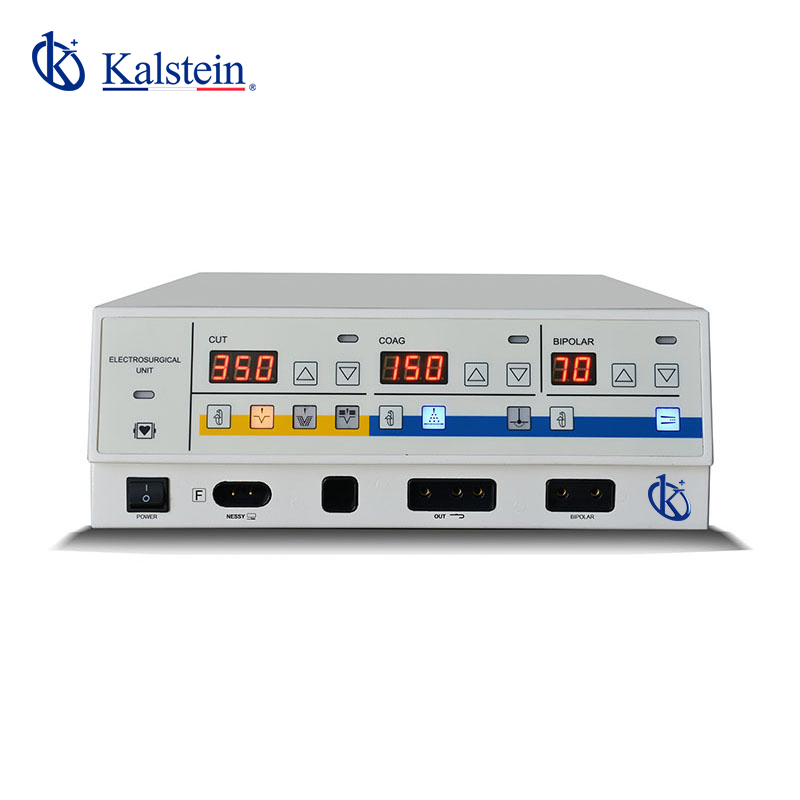In the world of modern surgery, technology plays a crucial role in improving clinical outcomes and patient safety. One of the most significant innovations is the electrosurgical unit, an indispensable tool in operating rooms worldwide.
If you’re seeking a blend of innovation and quality, you’ve come to the right place. At https://kalstein.eu/categorie-produit/medical-sector/electrosurgical-unit/?lang=en we offer you the luxury to explore our exclusive catalog of laboratory equipment. We manufacture each piece of equipment with a level of excellence. Our intuitive and agile online shopping channels are designed for your convenience, ensuring the friendliest prices. Don’t hesitate any longer, we bring science to life, it’s time to become part of our community. https://kalstein.eu/?lang=en
Benefits of the Electrosurgical Unit in Surgical Practice
Electrosurgical units offer numerous benefits that enhance both the surgeon’s experience and patient outcomes. Firstly, they enable greater precision in surgical procedures. By using electrical current to cut and coagulate tissues, surgeons can make more precise incisions and better control bleeding. This is particularly useful in delicate surgeries where precision is crucial.
Additionally, the electrosurgical unit reduces surgery time. By combining cutting and coagulating functions, surgeons can operate more efficiently, resulting in shorter surgical times and less exposure to anesthesia for the patient. This not only improves patient safety but also optimizes the use of hospital resources, allowing healthcare centers to treat more patients more effectively.
Unique Features that Differentiate the Electrosurgical Unit
Electrosurgical units are equipped with advanced features that set them apart from other surgical devices. One of the most notable features is the ability to adjust the power and frequency of the electrical current used. This allows surgeons to customize the settings according to the specific needs of each procedure, enhancing precision and control.
Another unique feature is the integration of advanced safety technology. Modern units include monitoring systems that automatically detect any anomalies in the electrical current, minimizing the risk of burns or unintended injuries. These safety innovations reflect a continuous commitment to patient protection and the improvement of surgical standards.
Medical Innovation: The Electrosurgical Unit in Medical Research
Medical research has been a key driver in the development and evolution of electrosurgical units. Advances in this field have led to the creation of more sophisticated and effective devices. Studies have shown that the use of the electrosurgical unit in specific procedures can significantly reduce postoperative complications, such as infections and hematomas, resulting in better long-term clinical outcomes.
The electrosurgical unit has also facilitated new surgical techniques that were previously impossible. For example, in laparoscopic surgery, where incisions are minimal, the ability to cut and coagulate simultaneously has revolutionized how these procedures are performed. These medical innovations continue to push the field of surgery towards new horizons, continually improving standards of care.
How the Electrosurgical Unit Solves Specific Problems
One of the most common problems in surgery is controlling bleeding. The electrosurgical unit effectively addresses this issue by providing a tool that cuts and coagulates simultaneously. This is especially useful in procedures where bleeding can be challenging to control, such as liver or cardiac surgeries. The ability to control bleeding precisely and quickly significantly improves surgical outcomes and reduces the risk of complications.
Another problem it solves is the need for multiple instruments during surgery. Traditionally, surgeons needed several tools to cut, coagulate, and seal tissues. The electrosurgical unit combines these functions into one device, simplifying the procedure and reducing surgical time. This not only improves operating room efficiency but also reduces the workload of the surgical team.
Clinical Applications and Recent Advances
The clinical applications of the electrosurgical unit are broad and varied, ranging from general surgeries to specific specialties such as neurosurgery and oncology. In neurosurgery, for example, the precision of the electrosurgical unit allows surgeons to operate near critical structures with minimal risk of damage. In oncology, it is used to effectively remove tumors, minimizing bleeding and postoperative complications.
Recent advances in this field include the development of robotic electrosurgical units. These units combine the precision of robotics with the advanced cutting and coagulating capabilities of electrosurgical technology. Preliminary studies indicate that these innovations can further improve surgical outcomes and reduce patient recovery time, representing a significant advancement in modern surgery.
Future of the Electrosurgical Unit: Trends and Perspectives
The future of the electrosurgical unit is promising, with several emerging trends pointing to further refinement of this technology. One of the most notable trends is the integration of artificial intelligence (AI) into electrosurgical units. AI can analyze real-time data during surgery, providing surgeons with critical information and suggestions to optimize the procedure. This capability could revolutionize surgical practice, making surgeries safer and more effective.
Another exciting perspective is the development of advanced biomedical materials that can be used in combination with the electrosurgical unit. These materials can help seal incisions more effectively and promote rapid tissue healing. With continuous innovation in medical research, it is likely that we will see a constant evolution in the capabilities and applications of electrosurgical units.
In conclusion, the electrosurgical unit represents a vital tool in modern surgery, offering numerous benefits and unique features that improve clinical outcomes. Its ability to solve specific problems, such as controlling bleeding and reducing the need for multiple instruments, makes it an indispensable technology in the operating room. With ongoing advances in medical innovation and research, the future of electrosurgical units is bright, promising significant improvements in surgical care and patient safety.

